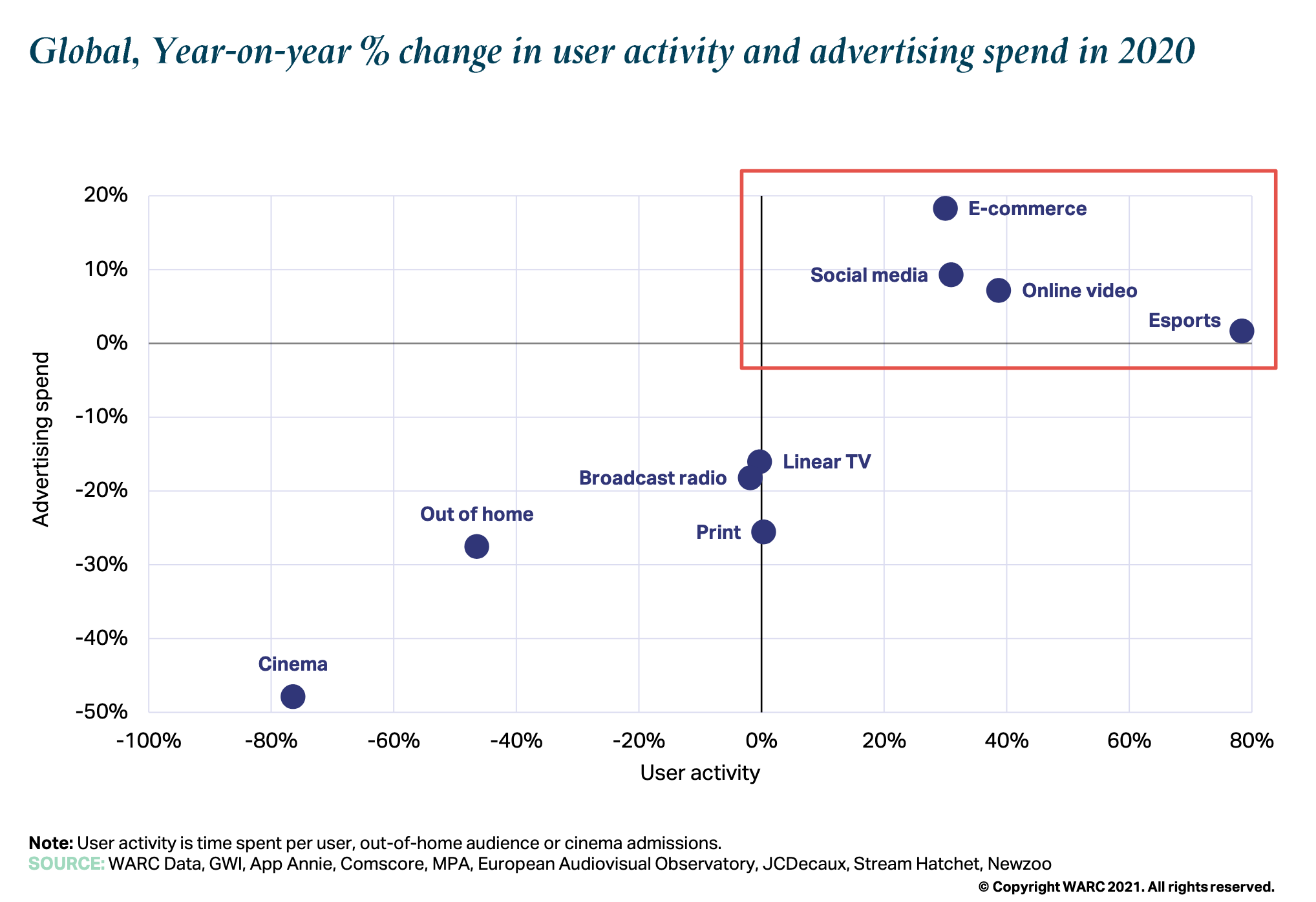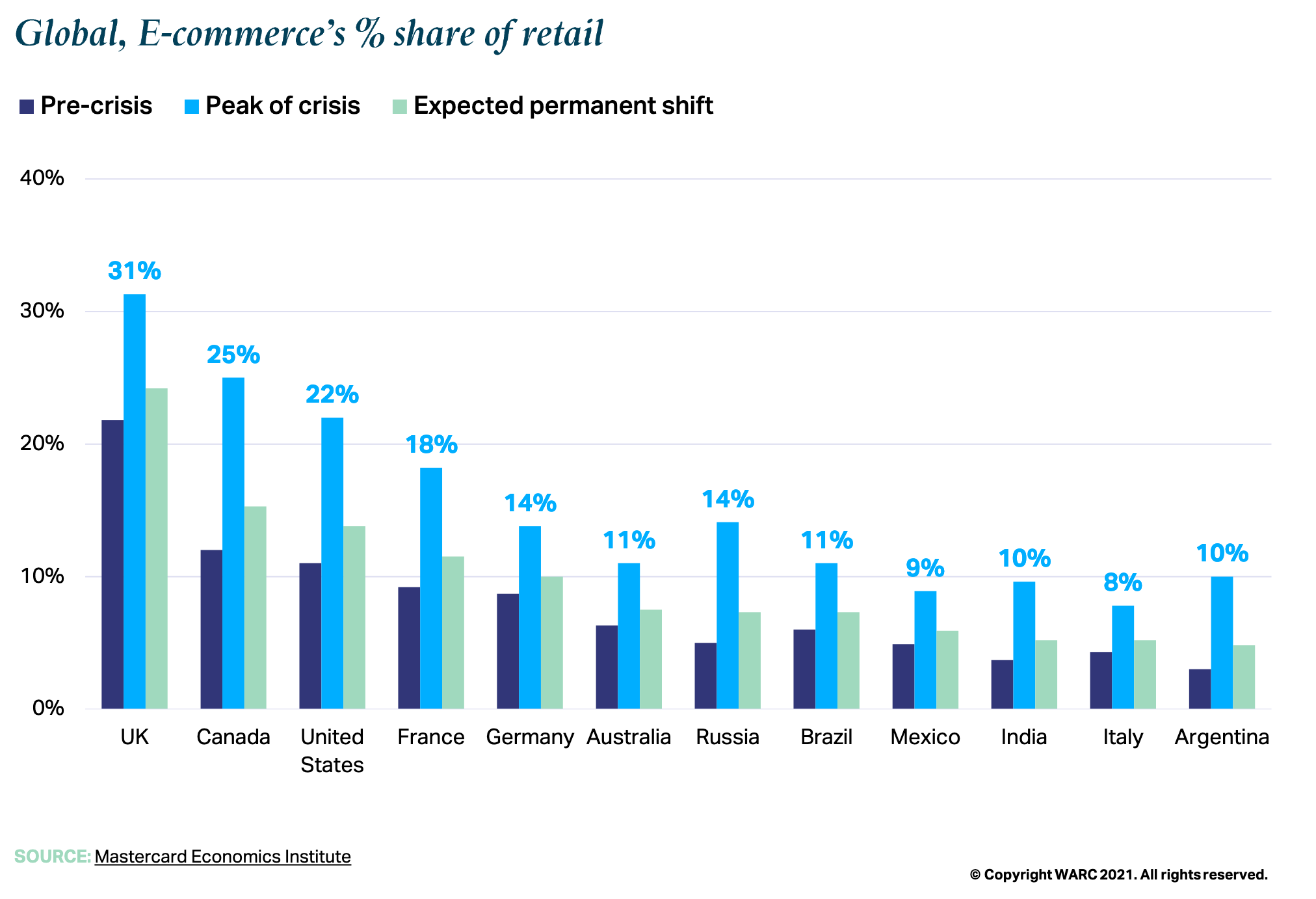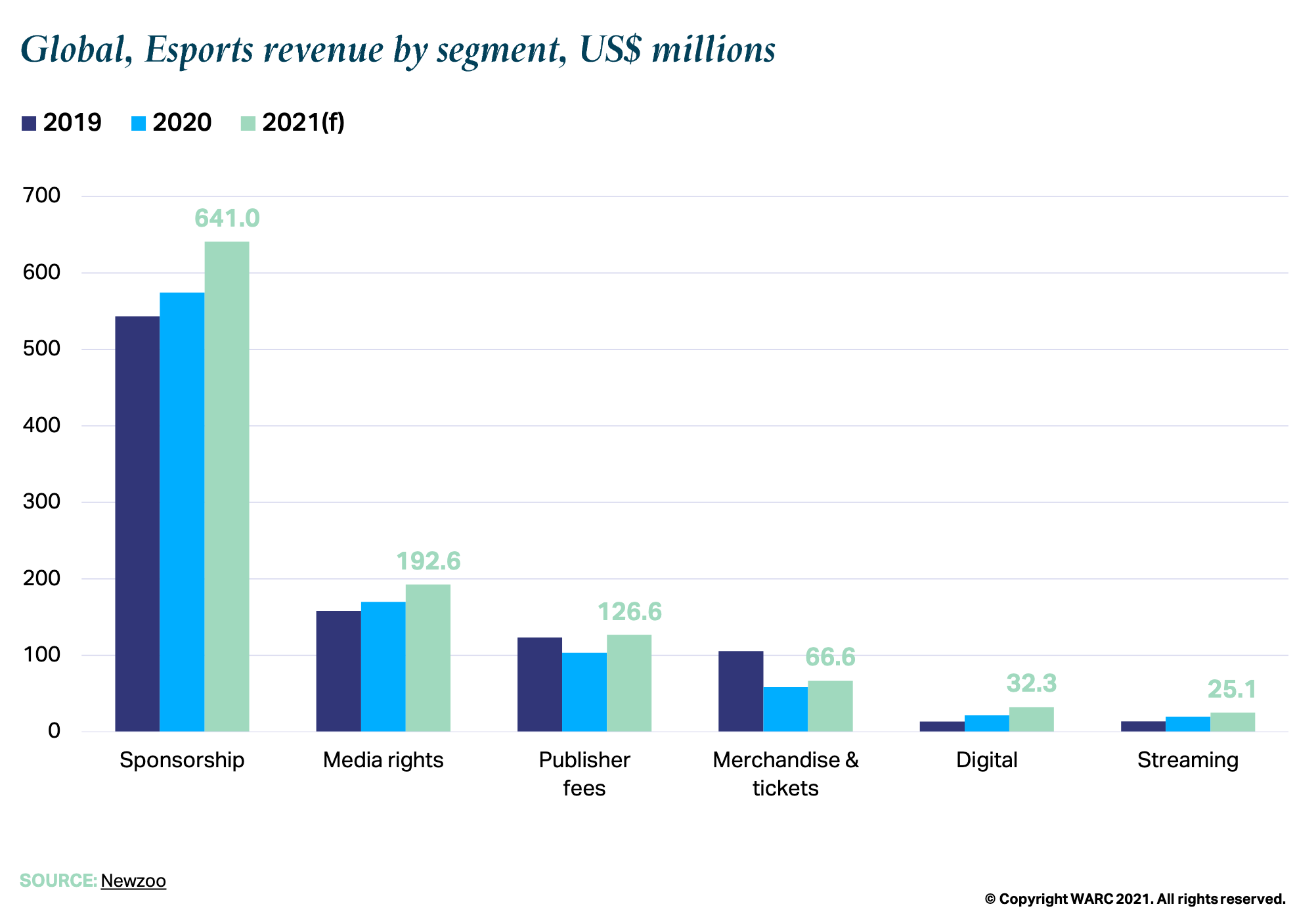As we complete a year into the COVID-19 pandemic, one thing that is fairly certain – the consumer shift to digital media has accelerated at an alarming rate and it looks like there's no going back to the old days. In their latest report, international marketing intelligence service, WARC, outlines the new, long-term shifts in e-commerce, social media, online video and gaming for brands and consumers.
An unprecedented disruption to media
The media disruption from COVID-19 was both rapid and severe, but data from the study suggests that brands were largely able to adapt to the immediate shifts in consumer behaviour. There is a clear correlation between changes in user activity and advertising spend in 2020.
While there was an uptick in consumption for many forms of media during the initial outbreak, this had been nullified within core traditional channels by the second half of the year. Digital media, however, has proven more attractive, and the dynamics explored in this report suggest this is likely to continue in response to newly formed consumer appetites.

E-commerce: $900bn more was spent at online retailers last year
The initial shift to online shopping was rapid, with its share of retail sales doubling in major markets like the United States, India and France. Nearly $1trn more was spent at online retailers last year, per the Mastercard Economics Institute, and the move to online retail has cultivated long-term habits. Brands are investing more in e-commerce advertising, which grew far ahead of the wider online ad market last year.
This trend is set to continue even as high street footfall increases in 2021 and major players like Amazon become more attractive. Data from Earnest Research show 59% of new COVID-19 Amazon customers were still buying with the company at the end of 2020, the highest retention rate in American retail.
The growing popularity of 'buy online for pickup in store', which has seen over a quarter of adults in the US (26%), Mexico (28%) and India (33%) using the service more, indicates flexibility and convenience will be a key consumer strategy in the future. We've seen QSR brands clothing retail chains in the Middle East adopt this as well.

Online video: Linear TV advertising falls an estimated $34bn as YouTube, social video and brand integrations lure ad budgets away
Online video is eroding linear TV advertising and now accounts for a quarter (26%) of the global video ad market. Digital platforms like YouTube are becoming more popular, with audiences now watching over 20 hours of mobile content each month, according to App Annie. More than a quarter (27%) of YouTube consumption is via connected TV devices, which now poses a direct challenge to linear TV activity.

Audiences are less concerned with these distinctions, though, and care more about quality content than the delivery platform. 20% of consumers globally, sees no difference between YouTube and linear TV consumption, according to AudienceProject research. This rises even higher in the US (36%) and the UK (27%).
Social media: TikTok was the social winner of 2020 – user activity doubled and brands are upping their investment
WARC Data forecasts social advertising spend to grow by double digits this year and Instagram and TikTok will be two of the main beneficiaries. Instagram’s focus on inspiration and TikTok’s emphasis on creativity has attracted brands, particularly in contrast to the more information-driven Facebook. Having a clear role in popular culture also means TikTok has overtaken Facebook on influencer campaigns
TikTok is now the social app with the highest level of user activity, having overtaken Facebook for the top spot in Canada (TikTok users spend 17 hours a month on the app), France (17 hours), the UK (20 hours) and the United States (22 hours), per App Annie.

Gaming and esports: Brands tap into sponsorships, mobile creative and celebrity collaborations as audiences expand
Gaming and esports audiences grew rapidly last year, with streaming platform Twitch approaching three million monthly viewers worldwide. Engaged audiences, rising consumption and cancelled traditional sports have made esports an attractive channel for brands. Audiences are also more receptive to advertising in exchange for in-game benefits, and gamers are 7% more likely to buy from brands they have seen advertised, according to GWI.
Sponsorship has proven particularly popular as e-sports offers collaborations that are not available in traditional sport disciplines. E-sports sponsorship is expected to grow 11.6% this year and top $600m for the first time, per Newzoo forecasts. The creative opportunities for brands extend beyond this, ranging from celebrity collaborations and partnerships.

However, a third (35%) of marketers say gaming is not an area of higher focus in 2021. According to the report, this is likely a result of multiple factors including a lack of standardised measurement, concerns around brand safety and a greater focus on more familiar channels that have a proven sales impact.
"The media disruption from COVID-19 was rapid and severe, but the data suggest that brands were largely able to adapt to the immediate shifts in consumer behaviour. The clear correlation between changes in user activity and advertising spend shows how digital media has benefitted. The main takeaway for brands has been a greater focus on agility, innovation and effectiveness, a trend that is likely to perpetuate digital media's rapid growth in 2021 and beyond," said Rob Clapp, Senior Analyst, WARC Data.





